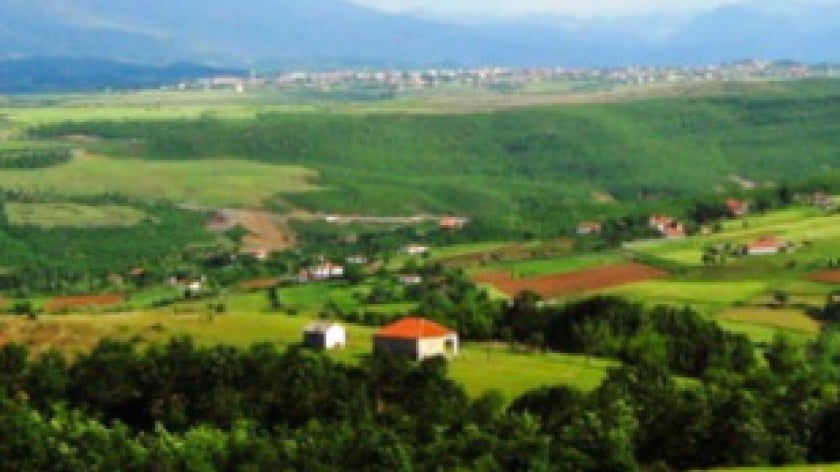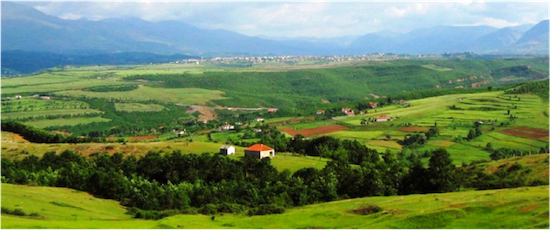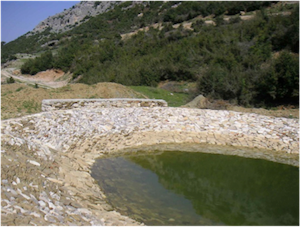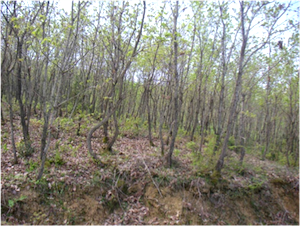

Albania’s landscape includes about 1 million ha of forests that stretch over 50 percent of the country’s surface area. The overuse of natural resources during country’s post-communist transition era resulted in considerable degradation of forests and pastures. High rates of reforestation were estimated to be due to illegal logging, increased use of forests for fuel-wood, uncontrolled harvesting and overgrazing of forests and pastures, and poor forest management. These were exacerbated by migration of people and weak law enforcement.
During the 1990s, Albanians, many of whom rely on land for their livelihoods, became increasingly aware of the damaging effects of unsustainable practices on the environment. In response, rural communities began to organize themselves to better manage natural resources, and the Government requested World Bank assistance to prepare a strategy for natural resource management.
The Albania Forestry Project (1996-2003), supported by a World Bank IDA credit and funding from Governments of Italy and Switzerland, was designed on a participatory planning platform. The project was piloted in 30 communes and supported the transfer of user rights and forest and pasture management from Government to local communities. Degraded state-owned forest and pasture zones were restored through promotion of sustainable management and use. Protected areas were enhanced and the foundations were laid for conservation of natural forest ecosystems. The positive practical outcomes and wide community support resulting from the project urged the Government to seek additional support to extend this approach on the national scale.

water-level.png
|

forest-cover.png
|
| Water points encourage less intensive grazing over larger areas |
Example of re-established forest cover |
The Albania Natural Resources Development Project (NDRP) was launched in 2005 with US $5 million grant from the Global Environment Facility (GEF) and US $7 million Bank IDA credit in co-financing. The project extended the successful approach adopted under the Albania Forestry Project to over 200 communes.
The NDRP has further developed participatory forest management planning, strengthened the national system of protected areas, supported the piloting of micro-catchment planning to integrate agriculture, forest and pasture management, and invested in restoration of forests, pasture and agricultural lands. In June 2008, the Albanian government enacted legislation making provisions for the transfer of forest and pasture land user-rights to 345 communes used by nearly one million people. This positive institutional change increased financial autonomy and management capacity of local government. Within the NDRP framework local management approach, small-scale investments have begun to reverse degradation and spur rehabilitation through planting of forests and orchards on degraded lands, the thinning and management of degraded forests and pastures and the introduction of erosion and grazing control measures. Concrete results include:
- 240 communes have prepared forest and pasture management plans;
- Governmental staff capacity on forest extension has been developed;
- A draft forest law and platform for forestry reform has been prepared and is under discussion in regional workshops;
- Forest and Pasture Users Associations participate actively in forest management planning and implementation of forest improvement activities;
- Natural forest habitats and scrub forest coverage have been improved and increased;
- 400,000 tons of erosion have been reduced; and
- A carbon sequestration program supported by the World Bank’s BioCarbon Fund is under implementation.
The NDRP has clearly demonstrated that sustainable management of forest and pastures yields numerous benefits including erosion control, stabilization of water supply and improved water quality, restoration of landscapes and enhanced biodiversity conservation. The beauty of Albania’s landscapes makes it an attractive destination for nature-based tourism and the quality of its non-wood forest products, specifically medicinal plants holds considerable export-income earning potential. Continued rehabilitation of abandoned erosion-prone lands can increase carbon sequestration and provide new revenue streams to local communities. Alternative sources of revenue can be sought by communities through provision of environmental services from sustainable land management.
Following receipt of a new request from the Ministry of Finance, the World Bank, in collaboration with Sweden’s SIDA, has established a US $3 million trust fund that will serve to scale-up activities supported under NRDP.
For more information:
World Bank Task Team Leader: Drita Dade (ddade@worldbank.org)
As part of GEF's support to the International Year of Forest, every month we are publishing a story about a successful GEF project that is promoting sustainable forest management, and having positive impacts on forests, climate, biodiversity and local livelihoods.